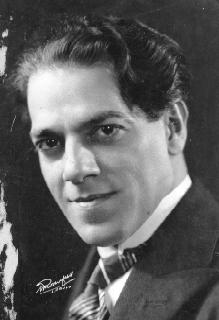History
Villa-Lobos composed his Sixth Quartet in 1938 in Rio de Janeiro, and it was first performed in the same city by the Quarteto Haydn on 30 November 1943, on the same programme as the premiere of the Seventh Quartet. The published score bears no dedication, but the manuscript is dedicated to the violist Orlando Frederico, who many years earlier had participated in the premieres of both the Second and Third Quartets.
The composition of this quartet came relatively soon after time spent living in Paris (1923-1930). [3] It is with this quartet that the references to the quartets of Haydn, which continue throughout the composer's later quartets, become clear for the first time. While in Paris, Villa-Lobos was immersed in the Parisian and broader European musical traditions of the day. However, while there are Haydnesque and also Beethovenian influences that appear in this quartet, [1] it is an oversimplification to conclude that his time living in Paris and closer connection with the music of these composers brought changes to his compositional style. Villa-Lobos himself remained adamant that his works were entirely his own; he believed firmly in the superiority of his work and took pride in his independence from the European tradition. [5] Indeed, the Sixth Quartet is regarded as the most nationalistic of all Villa-Lobos's string quartets. [6] This work - along with the Fifth Quartet - is marked by a deliberate move toward a more "popular" style, incorporating elements of Brazilian popular music. Villa-Lobos originally planned to designate this work as the second "popular quartet" (the Fifth Quartet is subtitled "Quarteto popular no. 1"), but in the end abandoned the idea of such a series. [7]
Analysis
This composition, like all of Villa-Lobos's quartets except the first, consists of four movements:
- Poco animato
- Allegretto
- Andante, quasi adagio
- Allegro vivace
Instead of the usual sonata-allegro form, the first movement presents a sectional structure. Four contrasting sections (with transitions between the first and second, and between the third and fourth) are followed by a recapitulation of the first section, and an extended coda. There is no development section. In keeping with the references to Brazilian popular music, Villa-Lobos begins with a shorter motive that he then expands in length and by increasing the variety in the rhythmic syncopations, which alludes to the Brazilian popular music after which Villa-Lobos titles the quartet.
The second movement is in a three-part, ABA song form in the character of the Brazilian improvised serenade known as the choro. The A section is homophonic, while the central B section features imitative textures and a xangô-like theme in common time held by the cello, set against a syncopated accompaniment of continuous pizzicato quarter-note triplets in the upper three voices. [11]
The third movement is also in ternary form, but with a variation. The A section falls into two parts, which are reversed in order when A is recapitulated after the central B section. The tonal language and textural features (such as rhythmic combination, doubling, portamento, and open fifths) of the outer sections resemble those of the Bachianas Brasileiras , especially parts of the first movement of Bachianas No. 5. The middle section features a fugato on a subject related to the cantilena (xangô) motive from the second movement. This passage is the first occurrence of the atonal, chromatic, legato style found often in Villa-Lobos's subsequent quartets
The finale is similar in structure to the first movement, consisting of three successive, contrasting sections and a recapitulation of the first, concluding with a short coda. Unlike the first movement, however (and unlike all of the composer's earlier quartets), there is a certain thematic kinship amongst the sections, with a recurrence of a falling-third figure and the use of pseudo-Indian motifs influenced by Antonín Dvořák's "American" Quartet
This page is based on this
Wikipedia article Text is available under the
CC BY-SA 4.0 license; additional terms may apply.
Images, videos and audio are available under their respective licenses.
